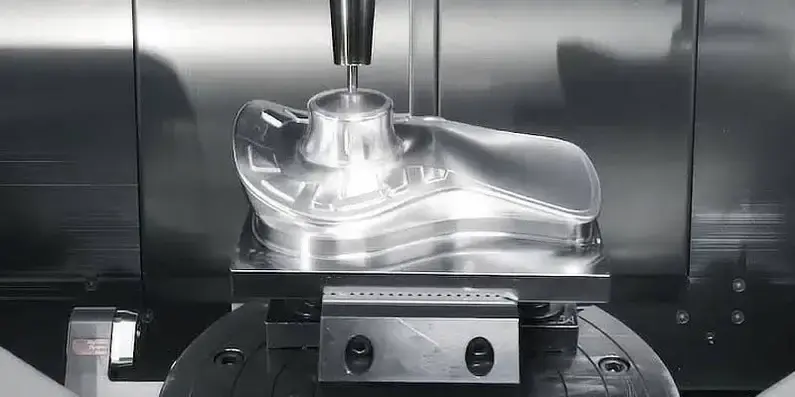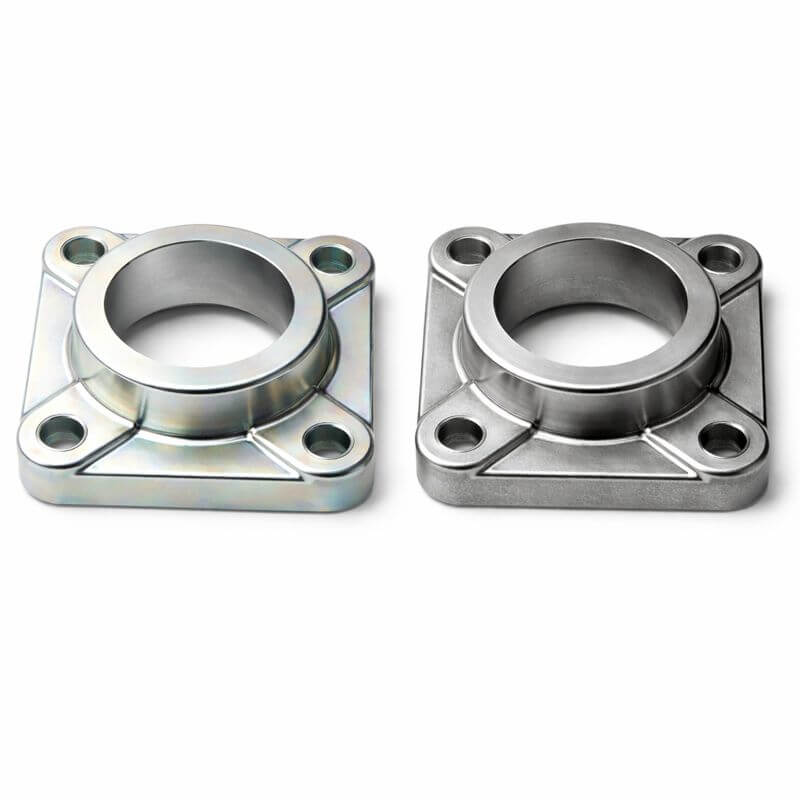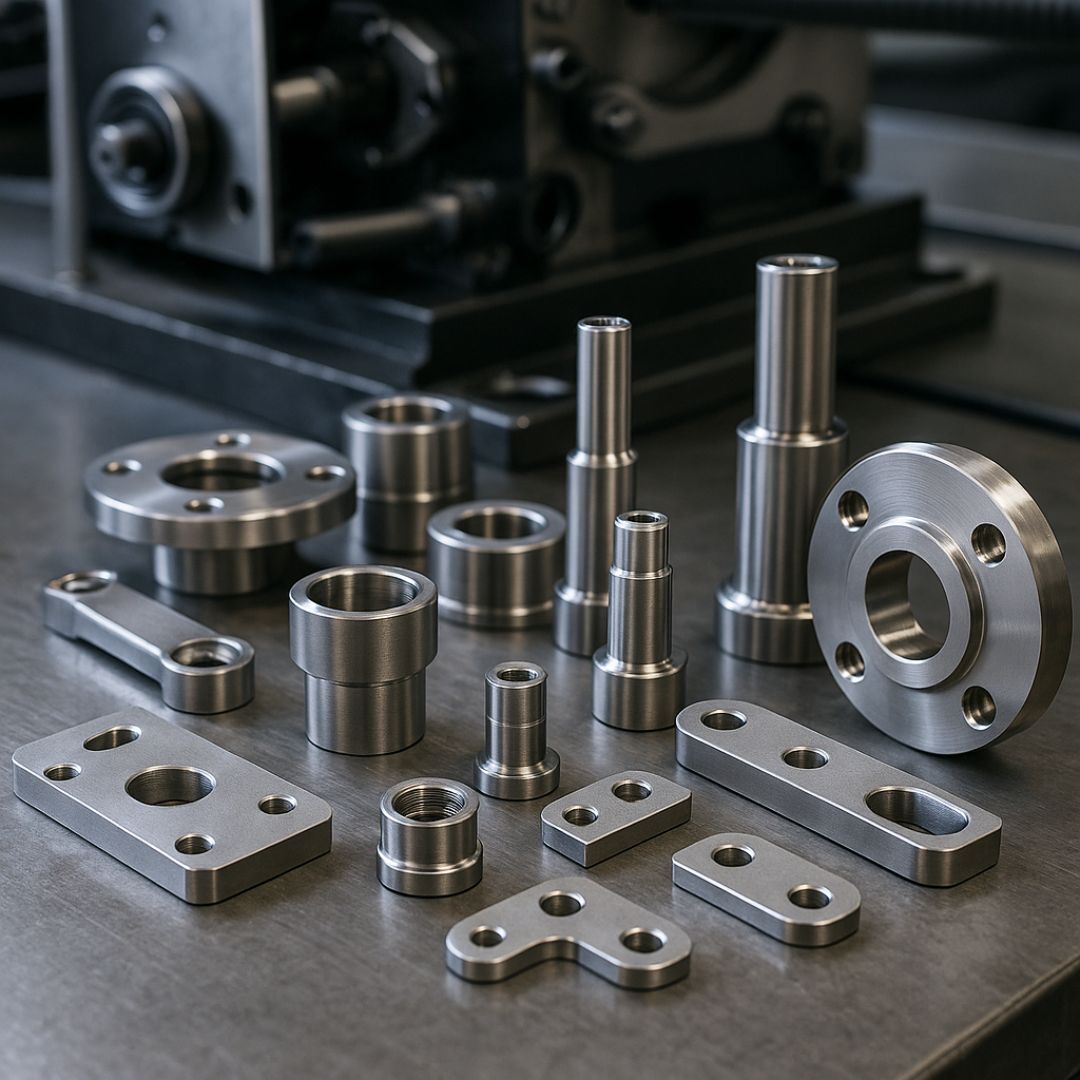3 min read
Galvanisation: Types of Zinc Coating, Benefits and Differences
Galvanisation is one of the most effective and widely used surface treatments for protecting steel and other metals from corrosion, oxidation and...

With global production exceeding 52.2 million tonnes in 2019, stainless steel (inox) remains one of the most widely used materials in the world.
From furniture to mechanical engineering, all the way to high-precision CNC machining, stainless steel has proven to be a reliable, durable and versatile resource ever since its invention by the Englishman Harry Brearley in 1913.
In the following 2025-updated article you will find:
Stainless steel is an alloy composed mainly of:
iron
carbon
chromium (≥10.5%)
nickel, molybdenum and other elements that modify its properties
Its distinctive feature is the spontaneous formation of a passive chromium-oxide layer, invisible and self-renewing, which protects the metal from:
rust
corrosion
oxidation
Tip: If the surface layer is scratched, it automatically regenerates when exposed to oxygen – this is what makes stainless steel truly “stainless”.

CNC machining in progress for a stainless steel part
There are over 100 grades of stainless steel, classified into five major families.
Here are the most important for industrial production, mechanical engineering and CNC machining.
The most common and versatile family.
excellent corrosion resistance
wide thermal range
non-magnetic
highly formable
Used in: furniture, industrial piping, food industry, architecture, CNC machining.
Similar to mild steel but with better corrosion resistance.
magnetic
economical
good ductility
Used in: appliances, interiors, boilers, decorative components.
High hardness and mechanical strength.
magnetic
lower corrosion resistance
Used in: cutlery, turbines, tools, high-stress components.
A mix of austenitic + ferritic structures.
exceptional corrosion resistance
high mechanical strength
good weldability
Used in: marine, chemical, pulp and paper industries.
Also known as semi-austenitic.
extremely high strength and hardness
includes elements such as Al, Nb, Cu
Used in: aerospace, advanced mechanics, high-performance applications.

Parts CNC machined by Weerg with 5-axis Hermle c42u on steel 304
Stainless steel is so widespread thanks to its unique mix of properties:
Fun fact: stainless steel doesn’t heat up easily. Placing a hot object on a stainless-steel handrail hardly increases its temperature.
One of the most common questions concerns the choice between titanium and stainless steel.
metallic alloy
heavier than titanium
more affordable
better weldability
high strength
pure metal
lightweight (40% lower density than stainless steel)
extremely corrosion-resistant
more expensive
more difficult to machine
The choice depends on your project priorities: weight vs durability vs cost.
It depends on:
operating environment
presence of water or salinity
need for formability
budget
mechanical requirements
type of CNC machining
Stainless steel is ubiquitous across many sectors:
Counters, containers, equipment, utensils.
Surgical instruments, prosthetics, sterile devices.
Gears, shafts, brackets, supports, high-strength components.
Bolts, hinges, fittings exposed to saltwater.
Furniture, handles, façades, decorative elements.
Stainless steels in the 300 series, including 304 and 316L, are more difficult to machine than carbon steels but deliver excellent results when handled correctly.
400 series is easier to machine
303 is the easiest stainless steel to mill
304 and 316L require specific tools and optimised parameters
Weerg machines 304 and 316L using Hermle C42U 5-axis milling centres, ideal for difficult materials and for achieving tight tolerances and high-quality finishes.
Learn more about the comparison between stainless steel 304 and 316
Stainless steel is one of the most complete and reliable materials in modern industry.
Its corrosion resistance, durability, hygiene, aesthetic appeal and versatility make it ideal for:
CNC machining
metal 3D printing
mechanical components
structural applications
design products
It is available in hundreds of variants, each designed for specific needs: from aggressive environments to high temperatures, from medical to precision engineering.
Need stainless-steel parts? Upload your file now and get an instant quote

3 min read
Galvanisation is one of the most effective and widely used surface treatments for protecting steel and other metals from corrosion, oxidation and...

2 min read
VALOI, a brand of the Finnish company Kameratori Oy and specialised in film-digitalisation systems for the home market, has started a collaboration...

2 min read
Stainless steel is one of the most widely used materials in modern industry thanks to its corrosion resistance, durability, and versatility.Among the...